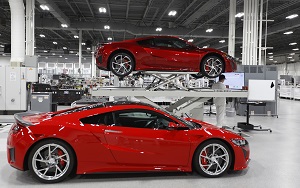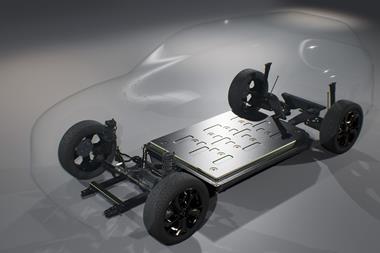 The allure of a gleaming surface has always been irresistible to the human eye. While technological complexity and model diversity are increasing to a bewildering degree, the external appearance of a vehicle remains an obvious deciding factor for most buyers. As a result, OEMs and their paint providers are coming up with a dazzling array of options, not limited to mere shades of colour but extending to wondrous lustres such as pearlescence. “We see each year new colours, new pigments, new effects coming into the market and gaining traction,” confirms Klemens Bartmann, global technology director at Axalta Coating Systems in this year's edition of Automotive Paintshop Solutions.
The allure of a gleaming surface has always been irresistible to the human eye. While technological complexity and model diversity are increasing to a bewildering degree, the external appearance of a vehicle remains an obvious deciding factor for most buyers. As a result, OEMs and their paint providers are coming up with a dazzling array of options, not limited to mere shades of colour but extending to wondrous lustres such as pearlescence. “We see each year new colours, new pigments, new effects coming into the market and gaining traction,” confirms Klemens Bartmann, global technology director at Axalta Coating Systems in this year's edition of Automotive Paintshop Solutions.
Judging by what I saw and heard myself at this year’s PaintExpo in Karlsruhe, Germany, in some ways coatings are as dynamic as the vehicles for which they provide the finishing touch. Besides new visual effects, the latest innovations include useful developments such as self-healing and self-cleaning characteristics, plus a ‘switchable’ responsiveness to environmental factors much like the skin of a chameleon. One of the main challenges, however, is to combine all of these aesthetical and practical benefits into a multi-functional, high-performance solution – something which is currently taxing both paint providers and research institutions.
Nor is the development of coatings a level playing field. Changes in vehicle manufacturing, such as the use of alternative materials in body construction, are requiring adjustments to the chemical composition of the paint layers from pretreatment upwards to cope with different thermal and adhesive characteristics during application. This has an impact on the environmental aspects of vehicle painting, which is also discussed in this edition's overview, Keeping finishes up to scratch. OEMs have for some time been under pressure to reduce volatile organic compounds, paint solids, wastewater and energy use, but they are demanding ever greater effectiveness from both coating and equipment suppliers. We can see this in the evolution of robotic technology for paintshops and also the increasing sophistication of energy management software.The technological solutions to these challenges are being put into action at new and upgraded OEM facilities around the world. Honda has recently finished building its Performance Manufacturing Center in Ohio for the multi-material 2017 Acura NSX supercar, while FCA US has included new paintshop technology in the revamp of its Windsor plant, Canada, in preparation for the arrival of the Pacifica minivan. Furthermore, at the time of writing, Audi was due to officially launch its new factory at San José Chiapa and therefore become the first premium OEM to export Mexican-made vehicles, with a key role in quality to be played by its paint facility – also claimed to be “the most environmentally friendly paintshop on the American continent”.
Given the importance of paint finishes to consumers, it is no surprise that OEMs of all hues are striving for a tighter grip over quality control and requiring – or developing – more advanced technology for this purpose, including automated procedures. These may be able to take the strain of visual inspection and ensure that vehicle finishes reach new heights, but of course the ultimate judge of quality will remain the discerning eye of the consumer.


































